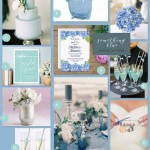Purple Grey Living Room Decor: A Symphony of Sophistication
The combination of purple and grey in living room decor creates a sophisticated and versatile aesthetic. This pairing allows for a spectrum of styles, ranging from minimalist chic to opulent grandeur, depending on the specific shades and accents employed. The inherent coolness of grey is balanced by the warmth and richness of purple, offering a visually appealing and harmonious living space.
Successfully integrating purple and grey requires careful consideration of the desired mood and the existing architectural elements of the room. The interplay of light, texture, and proportion is crucial in achieving a cohesive and balanced design. Understanding the nuances of color theory, particularly how various shades of purple and grey interact, is paramount to creating a visually stunning and comfortable living environment.
Understanding the Psychology of Purple and Grey
The psychological impact of color plays a significant role in interior design. Grey, often associated with neutrality, sophistication, and calmness, serves as a versatile backdrop that allows other colors to shine. Its understated elegance provides a sense of tranquility, making it an ideal choice for a living room, a space often used for relaxation and socialization.
Purple, on the other hand, is often linked to royalty, creativity, and spirituality. It is a color that can evoke feelings of luxury, mystery, and imagination. Deeper shades of purple, such as plum and eggplant, tend to create a sense of intimacy and drama, while lighter shades, like lavender and lilac, offer a more soothing and airy ambience. The specific shade of purple chosen should be carefully considered in relation to the overall desired atmosphere of the living room.
When combined, grey and purple create a harmonious balance. The neutrality of grey tempers the potential intensity of purple, preventing the space from feeling overwhelming. Conversely, purple adds depth and interest to the otherwise subdued grey, preventing it from appearing monotonous or sterile. The interaction of these two colors results in a refined and inviting living space that can adapt to a variety of personal styles.
Selecting the Right Shades of Purple and Grey
The success of a purple and grey living room hinges on the careful selection of specific shades within each color family. There is a wide range of greys, from cool, silvery tones to warm, charcoal hues, and a similarly diverse spectrum of purples, from deep aubergine to pale lilac. The chosen shades should complement each other and align with the desired aesthetic.
For a more contemporary and minimalist look, pairing a light, cool grey with a muted, dusty purple can be highly effective. This combination creates a serene and uncluttered atmosphere, ideal for those who prefer a clean and modern aesthetic. The use of white accents and metallic details can further enhance the sense of sophistication and airiness.
Alternatively, for a more opulent and dramatic effect, a deep charcoal grey can be paired with a rich, jewel-toned purple, such as amethyst or plum. This combination creates a sense of luxury and intimacy, perfect for a formal living room or a space intended for evening gatherings. The addition of velvet textures, ornate furniture, and gilded accents can amplify the sense of grandeur.
The size and natural light of the room should also be considered when selecting shades. In smaller spaces with limited natural light, lighter shades of grey and purple are generally preferable, as they can help to create a sense of spaciousness and brightness. Darker shades can be used sparingly as accents to add depth and visual interest, but they should not dominate the space.
In larger, well-lit rooms, the use of darker shades is more feasible. However, it is still important to maintain a balance to prevent the space from feeling oppressive. Incorporating lighter accents and reflective surfaces, such as mirrors and metallic finishes, can help to mitigate the potential for darkness and create a more balanced and inviting atmosphere.
Incorporating Purple and Grey Through Furniture, Accents, and Textiles
Once the desired shades of purple and grey have been selected, the next step is to incorporate them into the living room through furniture, accents, and textiles. This can be achieved in a variety of ways, depending on the budget, personal style, and the existing elements of the room.
A grey sofa is a versatile and timeless piece of furniture that can serve as a neutral anchor for the living room. It provides a comfortable seating area and allows for the incorporation of purple accents through throw pillows, blankets, and artwork. A grey sofa can also be paired with purple accent chairs to create a more visually striking and balanced arrangement.
Purple walls can create a dramatic and impactful statement. However, it is important to use purple paint strategically to avoid overwhelming the space. A single accent wall painted in a deep shade of purple can add depth and visual interest without making the room feel smaller or darker. Alternatively, a lighter shade of purple can be used on all four walls to create a more subtle and airy ambience.
Textiles, such as curtains, rugs, and upholstery, offer another opportunity to incorporate purple and grey into the living room. A grey rug can ground the space and provide a neutral foundation, while purple curtains can add a touch of elegance and drama. Throw pillows and blankets in varying shades of purple and grey can add texture and visual interest to the seating area.
Accessories, such as lamps, vases, and artwork, can also be used to introduce purple and grey accents. A purple vase filled with flowers can add a pop of color to a coffee table or bookshelf, while a grey lamp can provide a soft and ambient light source. Artwork featuring purple and grey hues can tie the entire room together and create a cohesive and harmonious design.
The key to successfully incorporating purple and grey into the living room is to maintain a balance and avoid overdoing it with either color. The goal is to create a visually appealing and comfortable space that reflects personal style and preferences, while also adhering to the principles of good design.
Consider the material palette as well. Velvet, silk, and chenille enhance the luxurious feel of purple. Linen and cotton blend well with lighter, more casual interpretations of the color scheme. Metallic accents in silver, chrome, or brushed nickel complement cool grey tones, while gold or brass work well with warmer greys and deeper purples.
Ultimately, the ideal purple and grey living room is one that is both visually stunning and functionally comfortable. By carefully considering the psychological impact of color, selecting complementary shades, and incorporating these colors through furniture, accents, and textiles, it is possible to create a space that is both sophisticated and inviting.

We Re Inspired By The Purple And Grey Color Combo In This Living Room Mauve Decor Gray

9 Purple And Grey Living Room Design Decor Furniture

How To Use Purple In Stunning Looking Living Rooms Room Decor Gray And Grey

Make Your Room Pop With Purple Gray Living Design Modern Grey

36 Stylish Purple Living Room Decor Ideas Digsdigs

15 Grey Two Colour Combinations For Living Room Beautiful Homes

How To Decorate With Purple In Dynamic Ways

Grey Traditional Living Room With Purple Soft Furnishings Designs New

Purple And Silver Living Room Decor Grey

Dark Grey And Purple Living Room Colour Scheme Color Schemes








